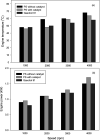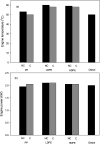Catalytic pyrolysis of plastic waste for the production of liquid fuels for engines
- PMID: 35515940
- PMCID: PMC9060870
- DOI: 10.1039/c8ra10058f
Catalytic pyrolysis of plastic waste for the production of liquid fuels for engines
Abstract
Catalytic pyrolysis of waste plastics using low cost binder-free pelletized bentonite clay has been investigated to yield pyrolysis oils as drop-in replacements for commercial liquid fuels such as diesel and gasohol 91. Pyrolysis of four waste plastics, polystyrene, polypropylene, low density polyethylene and high density polyethylene, was achieved at a bench scale (1 kg per batch) to produce useful fuel products. Importantly, the addition of binder-free bentonite clay pellets successfully yielded liquid based fuels with increased calorific values and lower viscosity for all plastic wastes. This larger scale pyrolysis study demonstrated that use of a catalyst in powder form can lead to significant pressure drops in the catalyst column, thus slowing the process (more than 1 hour). Importantly, the use of catalyst pellets eliminated the pressure drop and reduced pyrolysis processing time to only 10 minutes for 1 kg of plastic waste. The pyrolysis oil composition from polystyrene consists of 95% aromatic hydrocarbons, while in contrast, those from polypropylene, low density polyethylene and high density polyethylene, were dominated by aliphatic hydrocarbons, as confirmed by GC-MS. FTIR analysis demonstrated that low density polyethylene and high density polyethylene oils had functional groups that were consistent with those of commercial diesel (96% similarity match). In contrast, pyrolysis-oils from polystyrene demonstrated chemical and physical properties similar to those of gasohol 91. In both cases no wax formation was observed when using the bentonite clay pellets as a catalyst in the pyrolysis process, which was attributed to the high acidity of the bentonite catalyst (low SiO2 : Al2O3 ratio), thus making it more active in cracking waxes compared to the less acidic heterogeneous catalysts reported in the literature. Pyrolysis-oil from the catalytic treatment of polystyrene resulted in greater engine power, comparable engine temperature, and lower carbon monoxide (CO) and carbon dioxide (CO2) emissions, as compared to those of uncatalysed oils and commercial fuel in a gasoline engine. Pyrolysis-oils from all other polymers demonstrated comparable performance to diesel in engine power tests. The application of inexpensive and widely available bentonite clay in pyrolysis could significantly aid in repurposing plastic wastes.
This journal is © The Royal Society of Chemistry.
Conflict of interest statement
There are no conflicts of interest to declare.
Figures







Similar articles
-
Exploring the potential of clay catalysts in catalytic pyrolysis of mixed plastic waste for fuel and energy recovery.Heliyon. 2023 Dec 1;9(12):e23140. doi: 10.1016/j.heliyon.2023.e23140. eCollection 2023 Dec. Heliyon. 2023. PMID: 38076152 Free PMC article.
-
Thermal and catalytic pyrolysis of automotive plastic wastes to diesel range fuel.Heliyon. 2024 Oct 18;10(20):e39576. doi: 10.1016/j.heliyon.2024.e39576. eCollection 2024 Oct 30. Heliyon. 2024. PMID: 39512314 Free PMC article.
-
Conversion of plastic waste into fuel oil using zeolite catalysts in a bench-scale pyrolysis reactor.RSC Adv. 2022 Mar 8;12(13):7612-7620. doi: 10.1039/d1ra08673a. eCollection 2022 Mar 8. RSC Adv. 2022. PMID: 35424760 Free PMC article.
-
Pyrolytic conversion of waste plastics to energy products: A review on yields, properties, and production costs.Sci Total Environ. 2023 Feb 25;861:160721. doi: 10.1016/j.scitotenv.2022.160721. Epub 2022 Dec 7. Sci Total Environ. 2023. PMID: 36496020 Review.
-
Thermocatalytic Conversion of Plastics into Liquid Fuels over Clays.Polymers (Basel). 2022 May 23;14(10):2115. doi: 10.3390/polym14102115. Polymers (Basel). 2022. PMID: 35631997 Free PMC article. Review.
Cited by
-
Current Prospects for Plastic Waste Treatment.Polymers (Basel). 2022 Jul 31;14(15):3133. doi: 10.3390/polym14153133. Polymers (Basel). 2022. PMID: 35956648 Free PMC article. Review.
-
From outbreak of COVID-19 to launching of vaccination drive: invigorating single-use plastics, mitigation strategies, and way forward.Environ Sci Pollut Res Int. 2021 Oct;28(40):55811-55845. doi: 10.1007/s11356-021-16025-4. Epub 2021 Sep 3. Environ Sci Pollut Res Int. 2021. PMID: 34480299 Free PMC article. Review.
-
Exploring the potential of clay catalysts in catalytic pyrolysis of mixed plastic waste for fuel and energy recovery.Heliyon. 2023 Dec 1;9(12):e23140. doi: 10.1016/j.heliyon.2023.e23140. eCollection 2023 Dec. Heliyon. 2023. PMID: 38076152 Free PMC article.
-
Catalytic Pyrolysis of Polystyrene Waste in Hydrocarbon Medium.Polymers (Basel). 2023 Jan 6;15(2):290. doi: 10.3390/polym15020290. Polymers (Basel). 2023. PMID: 36679171 Free PMC article.
-
Sustainable management of plastic wastes in COVID-19 pandemic: The biochar solution.Environ Res. 2022 Sep;212(Pt E):113495. doi: 10.1016/j.envres.2022.113495. Epub 2022 Jun 1. Environ Res. 2022. PMID: 35660402 Free PMC article. Review.
References
-
- Awasthi A. K. Shivashankar M. Majumder S. IOP Conf. Ser.: Mater. Sci. Eng. 2017;263:022024. doi: 10.1088/1757-899X/263/2/022024. - DOI
-
- Fivga A. Dimitriou I. Energy. 2018;149:865. doi: 10.1016/j.energy.2018.02.094. - DOI
-
- Sharuddin S. D. A. Daud W. M. A. W. Aroua M. K. Energy Convers. Manage. 2016;115:308. doi: 10.1016/j.enconman.2016.02.037. - DOI
-
- Shah J. Jan M. R. Mabood F. Jabeen F. Energy Convers. Manage. 2010;51:2791. doi: 10.1016/j.enconman.2010.06.016. - DOI
-
- Jan M. R. Shah J. Gulab H. Fuel. 2013;105:595. doi: 10.1016/j.fuel.2012.09.016. - DOI
LinkOut - more resources
Full Text Sources
Other Literature Sources
Miscellaneous

